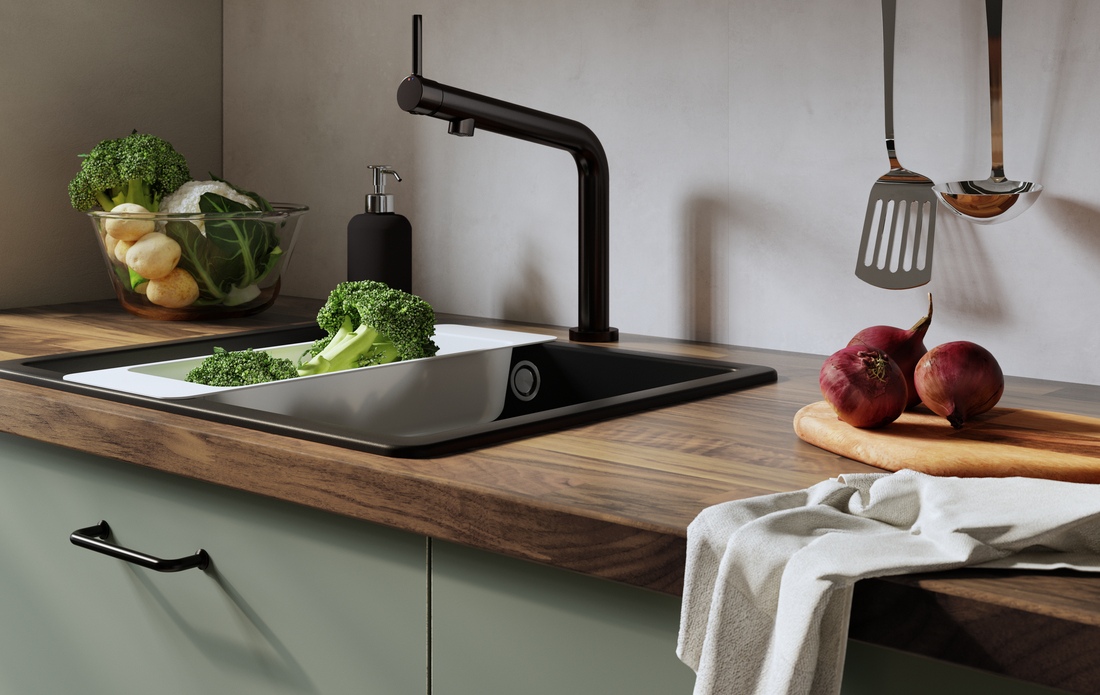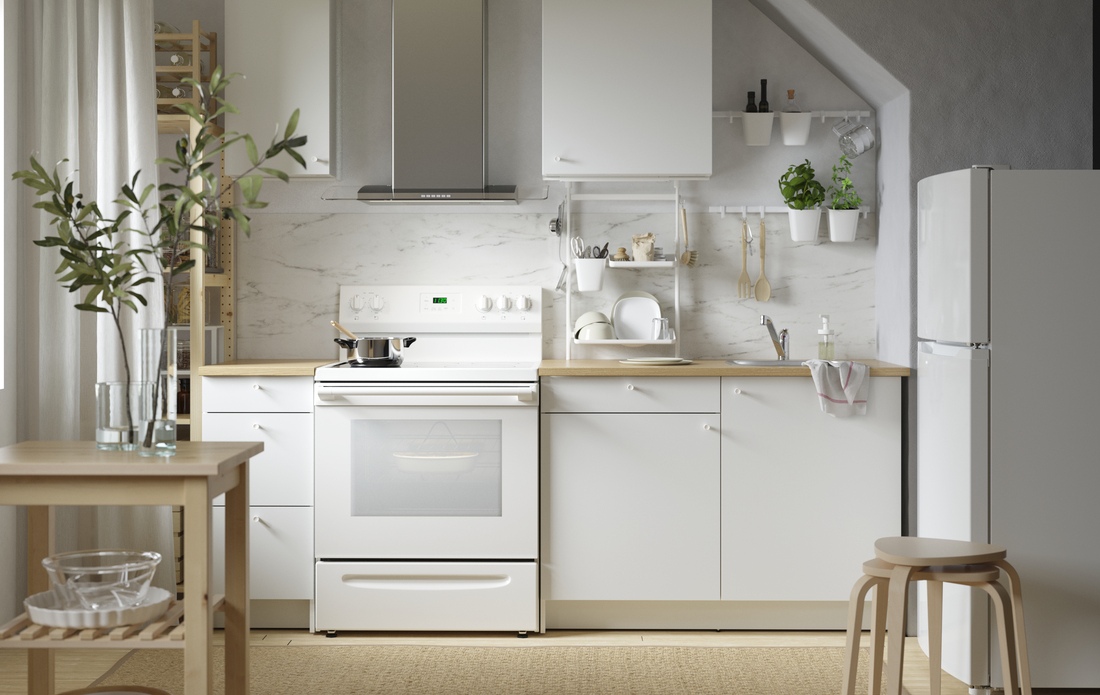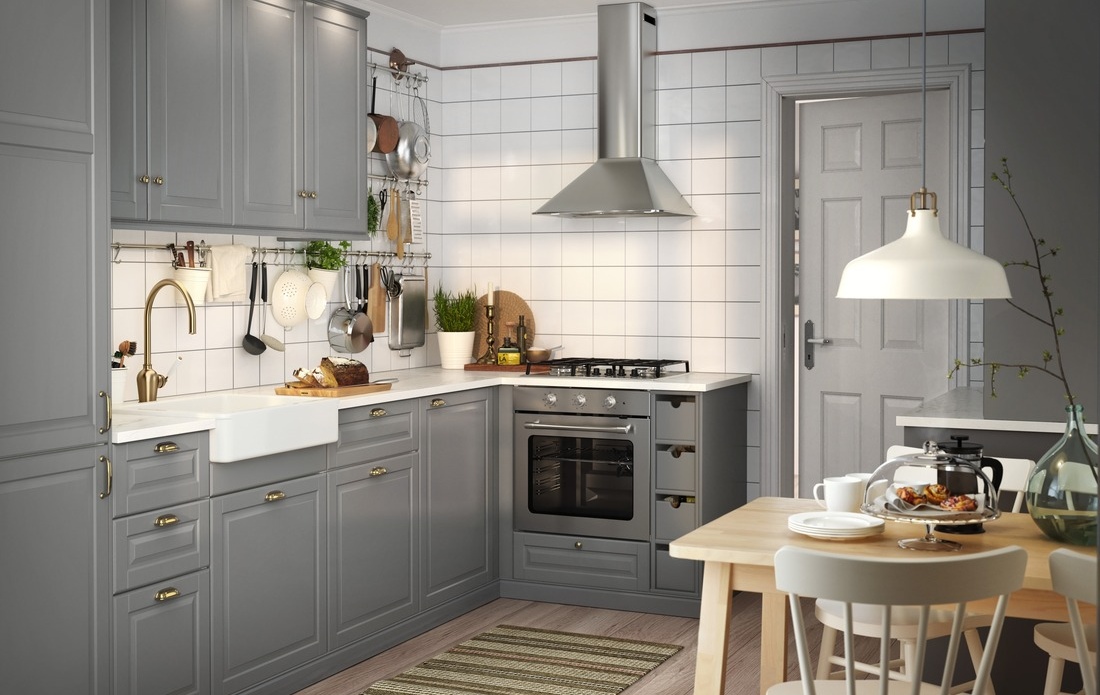The industrial style has become a popular choice for modern kitchen designs, offering a bold aesthetic, durable materials, and optimal space efficiency.
This concept is perfect for those who appreciate practicality while still wanting a kitchen with character. For homeowners with limited space, an industrial kitchen can be the ideal solution to maximize cooking functionality.
This style allows you to create an aesthetically pleasing space without sacrificing practicality, making it perfect for modern homes that prioritize simplicity and efficiency. Want to learn more about industrial kitchens? Keep reading!
What is an industrial kitchen?
The industrial style in interior design particularly for kitchens draws heavy inspiration from factories and old industrial buildings.
Instead of concealing structural elements like exposed pipes, brick walls, or raw concrete, this design embraces them, creating a raw, bold, and authentic look.
In the context of kitchens, the industrial style doesn’t strive for perfection or polish; rather, its charm lies in its imperfections. Despite its rugged appearance, an industrial kitchen can still feel warm and inviting through the use of natural materials and warm lighting.
Key features of an industrial kitchen
Industrial-style kitchens are easily recognizable by their distinctive materials, colors, and structural elements.
Common materials include exposed concrete, metal, and reclaimed wood.
Additionally, the color palette tends to be neutral and dark, featuring shades of gray, black, dark brown, or metallic tones. This combination creates a kitchen that feels open, sturdy, and visually striking.
Every element is chosen not just for its appearance but also for its functionality, ensuring an efficient and character-filled kitchen space.
Who is this style best suited for?
Industrial kitchens are ideal for apartment dwellers, minimalist homes, or anyone with an urban lifestyle. Their simple, open, and multifunctional design makes them perfect for compact spaces.
With durable, low-maintenance materials, this style offers a space-saving and easy-to-maintain solution essential for busy individuals or those living in densely populated urban areas.
Despite its practicality, an industrial kitchen remains stylish and full of character. It’s a great option for those who prioritize functionality without compromising aesthetics.
Differences between industrial kitchens and other styles
Aside from the industrial style, minimalist and Scandinavian designs are also popular choices for kitchen interiors. While industrial, minimalist, and Scandinavian styles share some similarities, they have fundamental differences:
Minimalist kitchen style
The most noticeable difference between minimalist and industrial kitchens lies in their materials and color palettes.
While industrial kitchens highlight rough textures like concrete, iron, and exposed brick, minimalist kitchens opt for smoother, cleaner finishes. Common colors in minimalist kitchens include white, light gray, and beige.
Industrial kitchens embrace an intentionally "imperfect" aesthetic, while minimalist kitchens focus on neatness and simplicity featuring flat surfaces, smooth textures, and minimal decor. The result is a calmer, cleaner atmosphere.
Read also: Modern Minimalist Small Kitchen Design Inspirations for an Elegant Look
Scandinavian kitchen style
Scandinavian design creates a warm, bright ambiance by emphasizing natural lighting and light wood materials.
Unlike industrial kitchens, which tend to be darker and bolder with exposed materials, Scandinavian kitchens prioritize a bright, natural feel.
The key contrast lies in lighting and material choices. Scandinavian kitchens use light colors like white, cream, or pastels, paired with oak or pine wood for an airy, cozy feel.
Meanwhile, industrial kitchens rely on dramatic artificial lighting and rough materials like wrought iron or exposed brick, creating a more assertive, masculine atmosphere.
Why choose industrial over other styles?
Industrial kitchens offer a unique blend of durability, bold aesthetics, and design flexibility, making them an excellent choice for those who value both function and style.
In terms of durability, industrial materials like stainless steel, wrought iron, and granite are perfect for high-use kitchens, as they resist heat, scratches, and moisture.
Aesthetically, the rugged yet stylish industrial look combined with urban and vintage touches delivers a strong character that’s hard to find in minimalist or Scandinavian designs.
The industrial concept can also be blended with modern, rustic, or even minimalist elements, making it easy to customize to personal tastes.
Read also: Latest Minimalist Wooden Hanging Kitchen Cabinet Designs for an Aesthetic Kitchen
Industrial kitchen design inspirations for different home sizes


